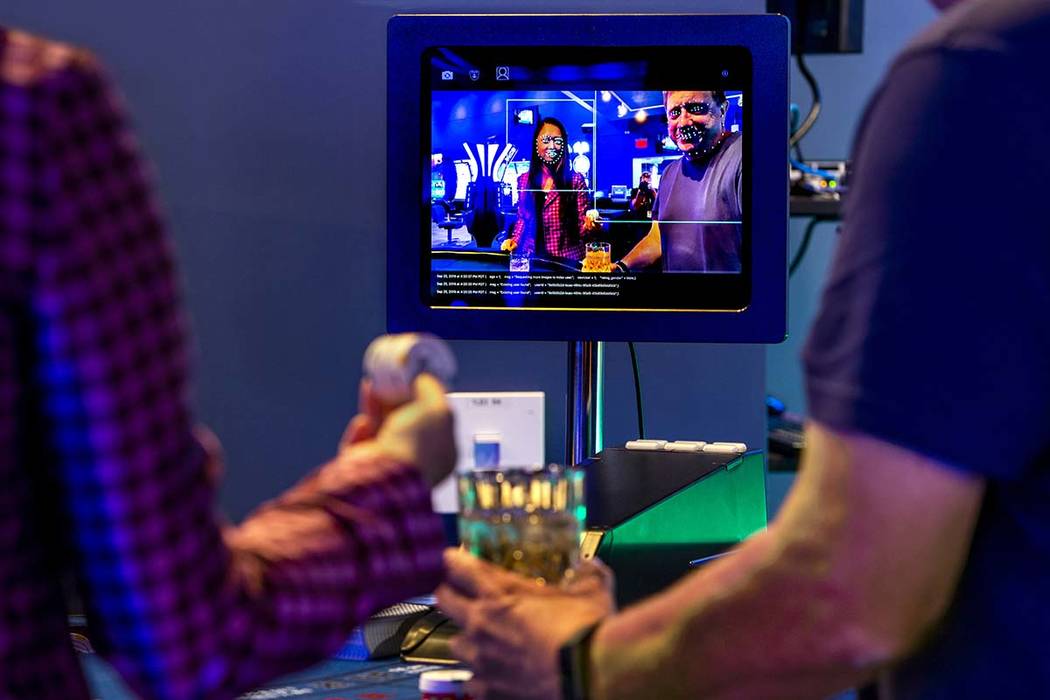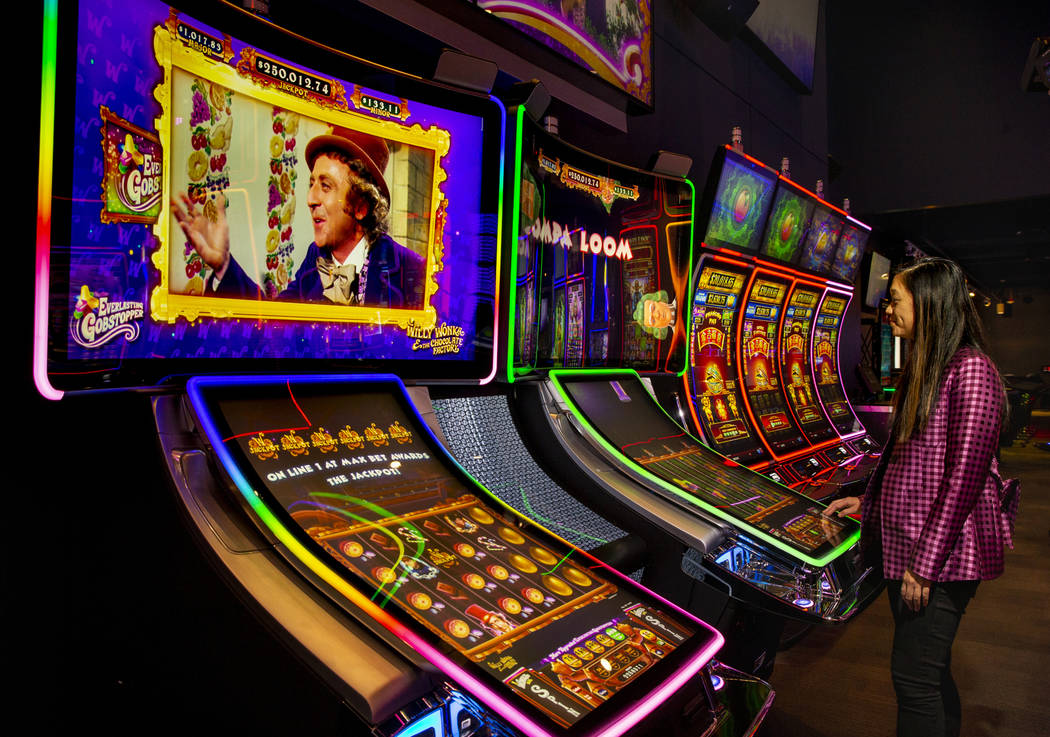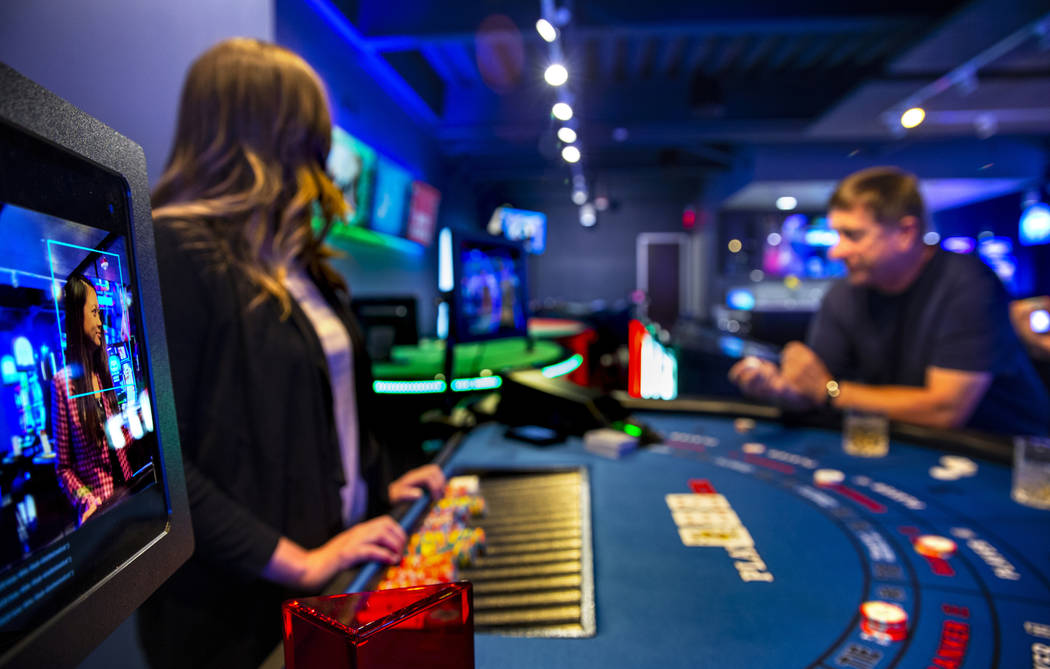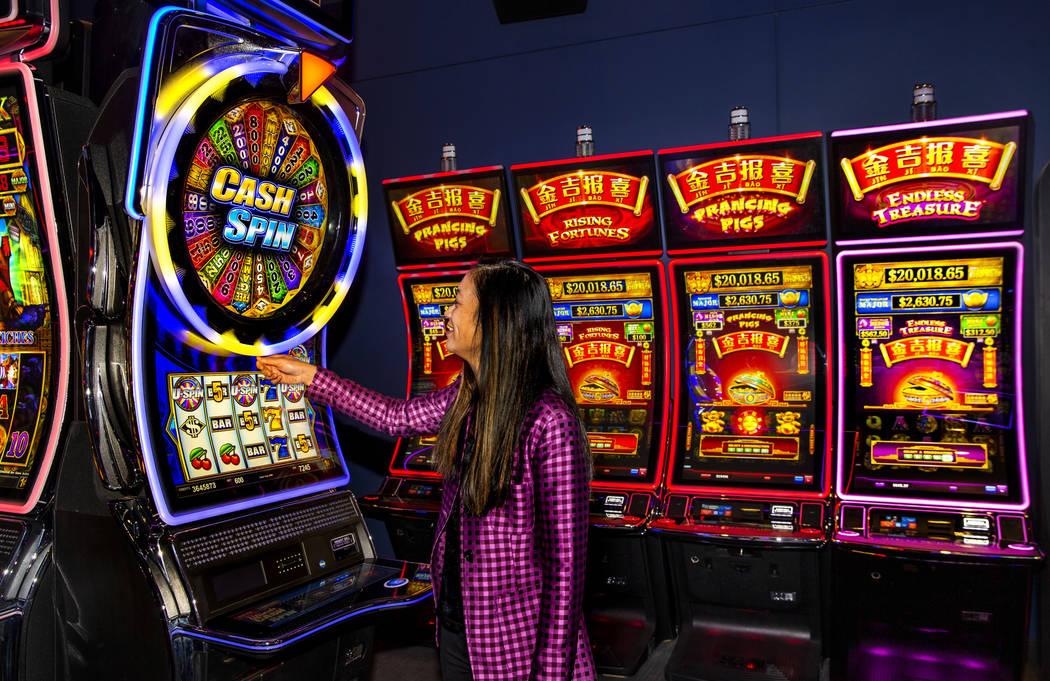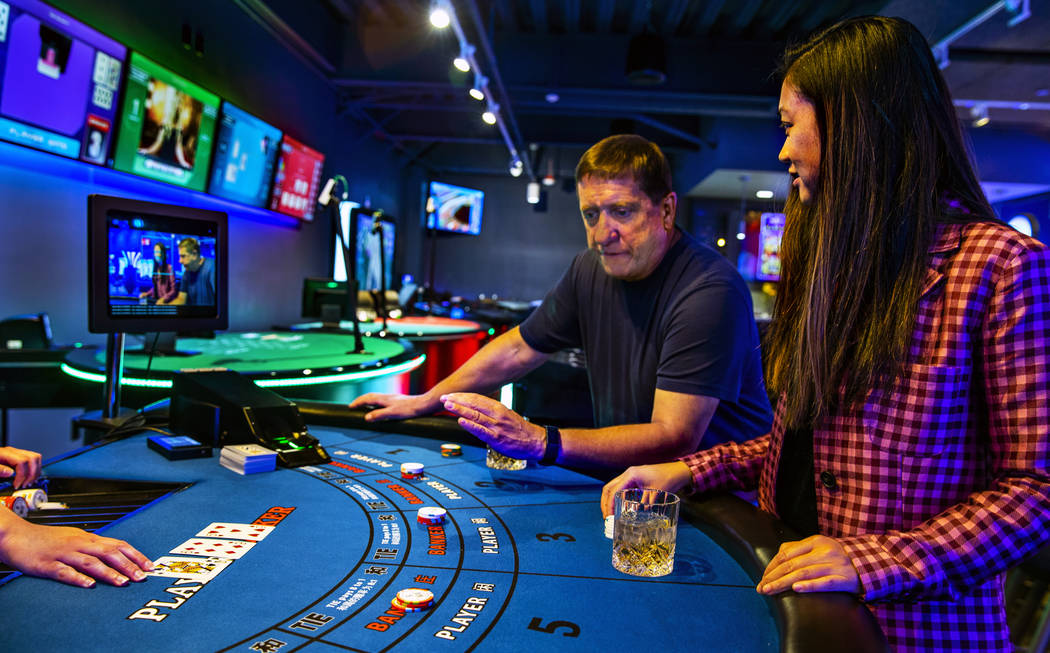Slot manufacturers to show facial recognition tech at G2E
Inside Scientific Games’ Las Vegas showroom — a display floor showing some of the company’s newest innovations — chief product officer Tim Bucher walks up to a baccarat table with two iPad-sized screens attached at the ends.
The displays show the title of the game and easily blend into the background amid the lights and sounds of slot machines. But with the press of a button, live camera footage of Bucher appears on the screen, with digital blue dots lining his mouth, eyes and face.
Below him is a line of text: Existing user found. Male. Over 21.
“You wouldn’t see this,” Bucher said, pointing to a small, dark camera on the screen. “The design needs to provide the players a frictionless experience that integrates with the rest of what is on the casino floor.”
Several slot manufacturers, including Scientific Games, are set to show off object recongnition technology at next month’s Global Gaming Expo. Experts say the technology could be a game-changer in the industry, allowing operators to collect more data on more players than ever before.
Bringing back ‘old Vegas’
Marcus Prater, executive director of the Association of Gaming Equipment Manufacturers, said this technology has been a long time coming in the gaming industry. He remembers having discussions about it when he worked for Bally Technologies back in 2007.
“It’s been a topic for a while,” he said.
Greg Colella, vice president of product management for Konami, said this new use of object recognition — also referred to as facial recognition — could help bring the “old Vegas feel” back to local casinos.
When one of these slot machines scans a player’s face, it can create an anonymous player ID for that individual. Colella said the technology can track how often a player has been to the property, how much money the person usually spends and even which in-house restaurants the individual frequents. All those details can be sent to the casino hosts to make the player’s experience more satisfactory.
The staff would “know exactly where you are, say hello, and could offer you something to eat at the steakhouse,” Colella said. “Those hosts are the key to a lot of that (old Vegas vibe). They knew people on sight. … This is allowing the modern casino to be able to provide better service at a much larger level.”
Thomas Soukup, Konami’s chief systems product officer, describes the technology as one that turns a player’s face into something like a QR code. With it, casinos would be able to gather more data than ever before. Instead of just tracking players with a loyalty card, they be able to track players who forgot their cards at home, or even those who aren’t enrolled in reward programs.
“Right now, casinos don’t have a way to incentivize an uncarded player,” Soukup said. “This opens it up so they can start reinvesting in and understanding those players.”
Those reinvestments could keep the players coming back for more.
“There’s definitely some lift in revenue (for casinos) in doing this,” Soukup said. “There are new opportunities once you get this data to make people feel special and get them to come back and stay at the facility.”
Pushback from players
Eilers & Krejcik Gaming principal Todd Eilers said not all players may welcome this innovation.
“You’re always going to have a certain group that doesn’t want to be tracked,” he said. “If they’re already signed up for a players card, I’m sure they’re not too worried about being tracked. I’m struggling to see why it would be an issue.”
Colella said the technology wouldn’t be a dramatic change for players, noting that casinos already use cameras extensively for security purposes.
Visitors may already be familiar with this technology in other areas, including the airline industry. Delta Air Lines customers traveling through Atlanta, Minneapolis and Salt Lake City can board their planes using facial recognition instead of a ticket.
“As we see this used in mainstream business areas to streamline purchases or reduce wait times in lines at the airport, that’s what will help acceptance” in the casinos, Soukup said.
Bucher likened casinos’ use of object recognition to social media. People give up information and allow casinos to film them for the chance to win money, he said, just as Facebook discloses data such as location, age and interests to be able to post “Happy birthday” on a friend’s timeline.
“We adhere exclusively to the privacy policies of our casino operators,” Bucher said. “Those policies have provisions allowing for facial recognition and other video and imagery capture for the purpose of player protection and business operations.”
Getting the go-ahead
Konami plans to show off its facial recognition devices next month at G2E. Soukup hopes the annual gaming trade show will help the company gain the approval of state regulators.
“I think if the regulators are able to see a demonstration of it, they can get their questions answered,” he said.
Bucher said he believes the technology could be a benefit to regulators. The extra cameras could make it easier to keep blacklisted players out of casinos, and they could even help those with gambling problems. The devices would be able to alert staff when players are spending too much money or, should players choose to be self-barred, could help them stay away from the casinos.
“With this kind of technology, you can employ responsible gaming so much better,” Bucher said.
Tony Alamo, chairman of the Nevada Gaming Commission, said state gaming regulators will need to make sure consumers remain protected amid the evolving technology.
“We must hold consumer protection at its highest priority,” he said. “Regulatory bodies (like the) Nevada Gaming Commission and Board need to test and verify (this technology’s) stability, accuracy and integrity, or the consumer will suffer, and that we cannot have.”
Contact Bailey Schulz at bschulz@reviewjournal.com or 702-383-0233. Follow @bailey_schulz on Twitter.



